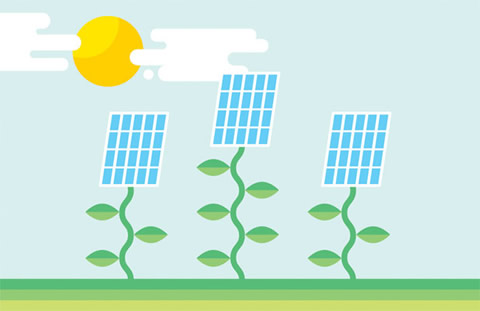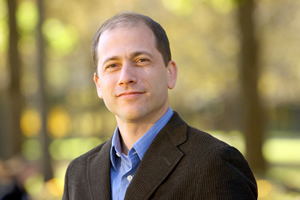Solar energy is called “green” for a reason. Our planet is covered in a massive solar power system that is as verdant as it is versatile. Leaves, plants, algae and bacteria use photosynthesis to convert and store solar energy on a scale that dwarfs anything attempted by human beings. Greenery is at work on land and in the sea, near the poles and at the equator, in winter and summer, rain or shine.
Human-made solar technology could benefit from similar adaptability, says U of T chemistry professor Greg Scholes. “Current photovoltaic or solar cells are caveman technology compared to any biological system,” he notes. Scholes works in the growing field of “quantum biology,” which uses quantum mechanics to explain how biological systems work on a molecular level. His research is pointing the way toward new solar converters that better mimic biological systems.
Commercial solar cells are commonly rated as being able to convert 10 to 15 per cent of light energy into usable power. But such ratings typically come from tests done under unrealistically ideal circumstances.
“How many hours a day are the conditions ideal?” asks Scholes. “An hour and a half at noon at the equator on a cloudless day?” Short days or cloud cover can greatly reduce solar cells’ efficiency. Local flora, though, continually adjust their receptors to maintain ideal conversion rates even when light dims or the sun sinks lower in the sky.
“I would like to achieve a solar energy harvesting device that is not passive – that on a cloudy day would change how it works,” Scholes says. “If we could do this, it would revolutionize solar harvesting.” The goal would not be to achieve higher ideal energy conversion rates, but to operate at the ideal rate more of the time.
Plants convert light into usable energy through a multi-stage process that must be completed within a few billionths of a second, or the energy is lost. They also use molecular biofeedback circuits that continually sense and respond to even tiny variations in light intensity, angle, wavelength and other factors. Researchers can fully understand these processes only by studying the quantum behaviour of photons, electrons and other tiny particles.
Of course, understanding these processes is not the same as reproducing them. “We know a lot about how biological harvesting systems work,” says Scholes, “but so what? When we first sat down to write a blueprint of how to design something that works like a leaf, we didn’t really know how.”
Recently, Scholes co-wrote a review article that laid out just such a blueprint. He is now confident that researchers will be able to demonstrate a synthetic leaf-like light harvester in the near term – possibly within five years.
Scholes sees his research as part of a continuum. The basic concepts he develops lay the groundwork for potentially transformative applications. “We’re trying to get completely new insights for addressing challenges in solar fuel production. Our research is driven by what we need to achieve.”
Recent Posts
For Greener Buildings, We Need to Rethink How We Construct Them
To meet its pledge to be carbon neutral by 2050, Canada needs to cut emissions from the construction industry. Architecture prof Kelly Doran has ideas
U of T’s 197th Birthday Quiz
Test your knowledge of all things U of T in honour of the university’s 197th anniversary on March 15!
Are Cold Plunges Good for You?
Research suggests they are, in three ways





